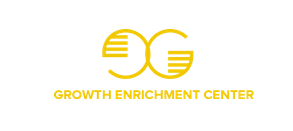
Revealing the secrets of strategic mastery involves aligning your organization's goals with daily operations, optimizing resource allocation, and fostering a culture of continuous improvement. You'll need to guarantee that every team member understands and engages with your strategic vision, using digital tools to enhance communication and collaboration. Empowering your teams and establishing clear lines of feedback can considerably boost productivity. By mastering these elements, you're setting the stage for sustained success and innovation. Further exploration will reveal even deeper insights into achieving strategic excellence.
Key Takeaways
- Align organizational goals with daily operations to maintain a competitive edge and anticipate market changes effectively.
- Optimize resource allocation by prioritizing projects that align with strategic objectives and treating resources as investment portfolios.
- Utilize digital communication tools effectively to enhance team connectivity and ensure clear communication protocols are in place.
- Empower teams by fostering a culture of strategic engagement, ensuring role clarity, and enhancing individual and collective performance.
- Promote continuous improvement by embedding innovation into daily operations and establishing feedback loops for ongoing refinement.
The Essence of Strategic Alignment and Its Impact

Understanding the essence of strategic alignment is fundamental to achieving your organization's goals.
It's about creating strategic coherence across all levels of your business. This means you've got to guarantee there's goal synchronization between what the top management envisions and the everyday actions of your team.
It's not just about setting targets; it's about weaving these targets into the daily fabric of operations. As you align your strategies, you're better positioned to anticipate market shifts and internal challenges, maintaining a competitive edge.
This alignment isn't a one-time fix but a dynamic, ongoing process that requires constant attention and recalibration.
Effective Resource Allocation for Strategic Success
To achieve strategic success, effective resource allocation is essential. You'll need to master resource utilization and budget optimization to guarantee every dollar and every effort propels you toward your strategic goals.
Think of your resources as a portfolio of investments. Where you allocate them determines your returns. Analyze each potential allocation for its expected impact and adjust dynamically as conditions change.
Prioritize projects that align closely with strategic objectives, guaranteeing that funds and manpower aren't just spent, but invested wisely. This precision in allocation not only streamlines operations but also maximizes overall organizational efficacy.
Strategic resource deployment is indeed your pathway to success.
Enhancing Communication in a Digital Workspace

How effectively does your organization communicate in a digital workspace? The key to virtual collaboration lies in optimizing digital engagement tools.
You're not just sharing information; you're crafting an interactive environment where ideas flourish. To excel, you must guarantee clarity in your communication protocols.
Are your messages concise? Do your platforms facilitate easy, accessible exchanges? Remember, the goal is to enhance connectivity, not complicate it.
Effective digital communication fosters a sense of community and keeps team members aligned with your strategic goals. Mastering this guarantees that no member feels isolated, boosting overall productivity and satisfaction.
Empowering Teams Through Strategic Engagement
Empowering your team through strategic engagement not only boosts morale but also drives them to achieve shared organizational goals more effectively.
By fostering a culture of strategic engagement, you're fundamentally equipping your team with the tools and mindset necessary for proactive participation in the company's vision and objectives.
This strategic alignment involves clear communication, role clarity, and a shared understanding of goals.
Team empowerment emerges when members feel genuinely involved and valued in the strategic process.
This approach not only enhances individual performance but also strengthens collective efforts, leading to a more dynamic, responsive, and ultimately successful organization.
Key Performance Indicators: Monitoring for Mastery

Understanding the impact of strategic engagement on team performance naturally leads to an examination of how these efforts can be quantified and optimized.
Through KPI analysis, you'll pinpoint what's working and what isn't. This isn't just about crunching numbers; it's about interpreting data to guide strategic decisions.
Effective performance tracking means regularly reviewing these indicators to guarantee alignment with your strategic goals. It's vital you don't just set them and forget them.
Regularly assess and adjust based on the insights gained. This dynamic approach guarantees you're not merely reacting to changes but proactively steering your team towards mastery.
Overcoming Common Challenges in Strategic Alignment
While strategic alignment can propel an organization toward its goals, steering through its common challenges requires careful attention and adaptability. Conflicting priorities and communication gaps often derail strategic efforts.
To navigate these, you'll need to first identify and explicitly address the conflicts in priorities at all organizational levels. Establishing clear communication channels and regular check-ins can bridge gaps, ensuring everyone is on the same page.
You should prioritize transparency, allowing team members to understand how their roles contribute to broader objectives. This clarity not only mitigates conflict but also aligns individual actions with the organization's strategic vision, fostering a cohesive execution of plans.
Cultivating a Culture of Continuous Improvement

Building on the solid foundation of strategic alignment, your next step is to foster a culture of continuous improvement within your organization. This entails embedding innovation practices into daily operations and establishing robust feedback loops.
You'll need to encourage your team to challenge the status quo and seek incremental gains continuously. By actively soliciting feedback and facilitating open dialogue, you can identify areas for refinement and innovation.
This approach not only drives operational efficiency but also enhances employee engagement by making them active participants in the organization's evolution.
Frequently Asked Questions
How Does Strategic Alignment Influence Customer Satisfaction?
Strategic alignment guarantees your service delivery meets customer expectations, boosting satisfaction. By synchronizing goals and resources, you enhance the effectiveness and consistency of services, leading to happier customers and better business outcomes.
What Role Does Emotional Intelligence Play in Strategic Leadership?
You'll find that emotional intelligence, particularly emotional awareness and leadership empathy, is critical in strategic leadership. It enhances decision-making, team cohesion, and adaptability, ensuring leaders can effectively navigate and align complex organizational dynamics.
Can Strategic Mastery Impact an Organization's Reputation?
Certainly, strategic mastery can elevate your organization's reputation. Through adept reputation management and strategic communication, you'll enhance visibility and trust, positioning your business as a reliable and forward-thinking leader in your industry.
How Does Global Market Volatility Affect Strategic Planning?
Global market volatility forces you to adapt. Market fluctuations demand robust risk management. Economic indicators guide your adaptive strategies. Competitor analysis sharpens responses. Investment diversification buffers against unpredictability, ensuring your strategic planning remains resilient and proactive.
What Are the Ethical Considerations in Strategic Decision-Making?
You must weigh ethical implications when making strategic decisions. Utilize decision-making frameworks that prioritize integrity and transparency, ensuring your choices reflect corporate values and positively impact stakeholders and the broader community.
Conclusion
As you harness the powers of strategic mastery, envision yourself as the captain of a grand ship traversing through uncharted waters. Your alignment, resource management, and communication are your compass, sails, and rudder, steering you towards success. By continually refining these tools and embracing a mindset of continuous improvement, you'll not only overcome the waves but also lead your crew to new horizons. Embrace this journey, for the rewards of mastery are vast and enduring.

